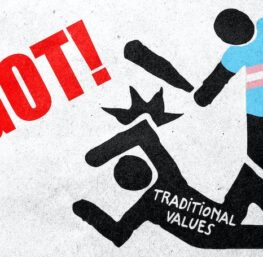American Thinker | Randall Hoven | Feb. 6, 2009
With today’s economy, wouldn’t it be nice if we knew how to make an economy grow? To know what works and what doesn’t? Well, we do. We just prefer to ignore the truth.
What works is economic freedom. What doesn’t work is more government.
I’m sorry that those words sound simplistic and like Republican “ideology” (or at least what used to be Republican ideology – before the Bailout Fairy arrived). But they have the benefit of being true. If you were to start from scratch, ignoring all ideology and going simply by the evidence of what produces prosperity, you would come to that conclusion: more freedom and less government lead to greater wealth and prosperity.
It’s not the ideology. It’s the evidence.
Unfortunately, we are ignoring the evidence and rushing headlong in the wrong direction. Alec Baldwin and others threatened to move to France when George W. Bush became President. They didn’t need to. France moved here.
Exhibit A is a thorough study of what works and what doesn’t, conducted over 200 years ago, by Adam Smith. He examined the economies at the time and through history and came to the following conclusion.
“Little else is requisite to carry a state to the highest degree of opulence from the lowest barbarism but peace, easy taxes, and a tolerable administration of justice: all the rest being brought about by the natural course of things.”
The government need not “manage” the economy, but just stay pretty much out of the way, beyond securing “life, liberty and property.”
Exhibit B is the Heritage Foundation’s Index of Economic Freedom. Every year the data support Adam Smith’s conclusion: more economic freedom yields more prosperity, where economic freedom means secure property rights and limited government in terms of size and control of the economy.
Exhibit C is the case of Presidents Reagan and Mitterrand. Reagan was President of the US from 1981 to 1989 and was considered a very right-wing, free-market zealot. Mitterrand was President of France from 1981 to 1995 and was a socialist, the first socialist president of France. This would be an apples-to-apples comparison of free-market vs. socialist governance. How did that work out?
France was behind the US in 1980 and would fall further behind it in the following years. In 1980, France’s GDP per capita was 84% that of the US. By 1989 it was down to 79% and by 1995 it was 78%. (For the various international comparisons throughout this article, see the US Statistical Abstract.) In 2006, the latest year for which data is available, it was just 74%. All that wonderful socialism in France just set it back further and further from the US.
Exhibit D is Japan. Remember the Japanese miracle? From 1960 to 1991 its GDP per capita grew from 37% of the US’s to 86%. It was closing in on us! By 1991 we were all afraid that the Japanese would outpace us in computer chips, high definition televisions, artificial intelligence, automobiles and overall economic growth. It would buy up all the US assets worth having and we would soon all be working for Japanese bosses.
At that point, 1991, the Japanese government spent just 31.6% of its GDP, lower than that of any European country, Canada or the US. The US was spending 37.8%. The “small government” US had an even smaller government competitor, and it was eating our lunch. Only the US, West Germany and Norway were richer than Japan at that time (GDP per capita).
But then Japan did us a great favor. It decided to grow its government. By 1996 its government was bigger than the US’s as a fraction of GDP, and would remain so through 2005. In 2000 its government was bigger than that of Australia, Ireland, Luxembourg, Switzerland and the United Kingdom. It had definitely lost its “smallest government” title.
How did that work out for Japan? Its GDP per capita went from 86% that of the US to just 73% by 1995. It had fallen behind Canada, Australia, Austria, Belgium, Denmark, France, the Netherlands, Sweden and the United Kingdom by that same measure.
. . . more



